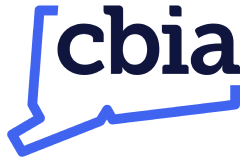Call us: (203) 448-2614
ABOUT GS ENTERPRISES
ABOUT GS ENTERPRISES
DISCOVER OUR PASSION AND DEDICATION FOR DRIVING YOUR BUSINESS FORWARD
At GS Enterprises, we roll up our sleeves and work alongside you to solve complex operational challenges with practical, effective solutions. As a woman-owned and led company, we take pride in being hands-on, responsive, and focused on building lasting partnerships. From early discovery through implementation and execution, we guide organizations through the work that improves performance, strengthens processes, and drives operational excellence.
We’re approachable, down-to-earth advisors committed to identifying the right strategies for your business—and helping you put them into action. By working together, we help you achieve immediate priorities while building a foundation for long-term success.
Let’s work together to tackle what’s next. Reach out today to learn how GS Enterprises can help simplify operations, remove roadblocks, and deliver measurable results.
We’re approachable, down-to-earth advisors committed to identifying the right strategies for your business—and helping you put them into action. By working together, we help you achieve immediate priorities while building a foundation for long-term success.
Let’s work together to tackle what’s next. Reach out today to learn how GS Enterprises can help simplify operations, remove roadblocks, and deliver measurable results.

WHO WE ARE
LEADING WITH EXPERIENCE: MEET THE EXPERTS WHO MAKE IT HAPPEN
GS Enterprises is driven by the dynamic leadership of Gordon Hull and Susan Conrad, two dedicated professionals who are passionate about helping businesses thrive. With decades of experience across diverse industries, they are not just problem solvers on the production floor—they are committed to enhancing employee morale, fostering strong leadership, and unlocking the full potential of every business they work with.

Susan Conrad

Gordon Hull
“There is always a solution to a problem”
Susan Conrad & Gordon Hull
GS ENTERPRISES OWNERSCORE VALUES
OUR COMMITMENT TO EXCELLENCE AND INTEGRITY
With decades of hands-on experience in manufacturing consulting, we partner closely with start-ups and growing businesses to drive success. Our expertise spans business operations, critical engineering, and manufacturing solutions, all delivered with a practical approach. We’re committed to enhancing team performance and streamlining processes to provide accurate cost savings. At our core, we value dedication, efficiency, and a deep commitment to your growth. Let’s achieve great things together!
